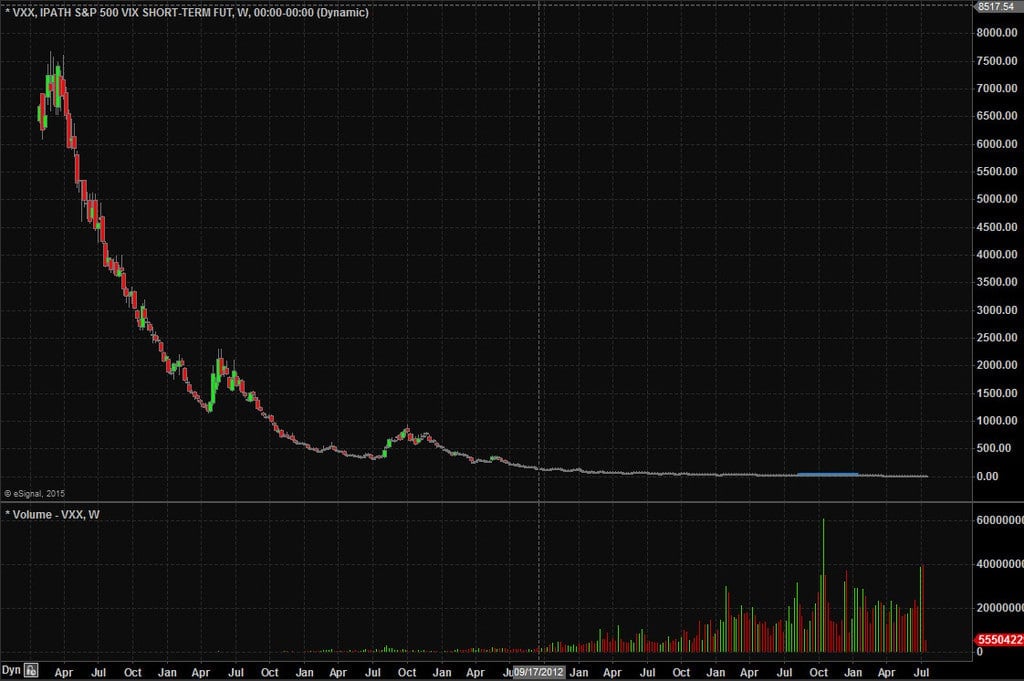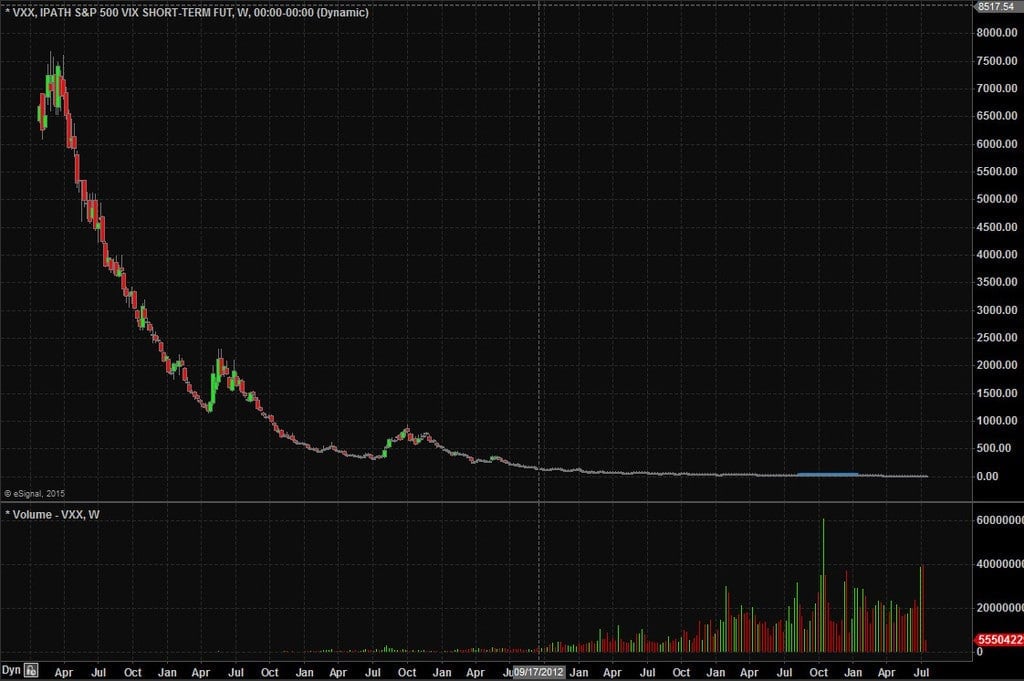VXX has been a hot topic on the desk at SMB during the recent increase in market volatility. If you aren’t aware, the VXX is an exchange traded note (ETN) issued by Barclays that has the objective of following the cost of owning implied volatility.
The biggest challenge with owning implied volatility is that implied volatility has a limited shelf life. All instruments that give long exposure to implied volatility are derivatives. These derivatives must be rolled before they expire. And this rolling has a cost.
So what happens when you take a range bound market (implied volatility) and add costs to it? You get a negative drift.
This negative drift is one of strongest trends in the markets.
You can see this taking place in recent price action: Currently the $VIX is about 16.7% off the recent low and VXX is only 6.5% above its low.
And you can see this looking much further back — where the $VIX has an all time high of 89.53 and the VXX has a reverse-split adjusted price of 7,680.
This persistent weakness should not be seen as a given. There are dramatic spikes that can — and do — occur in the VXX. When these spikes occur, the long side can offer great short term opportunities (as Trader90 subscribers have seen in recent days).
But more often than not, the short side of VXX can offer a great way to benefit from bullish market moves in equities.
Here is a view of the lifetime history of VXX
-Andrew Falde
Learn How SMB Trader90 and Trader365 Can Transform Your Trading Habits
No relevant positions.


